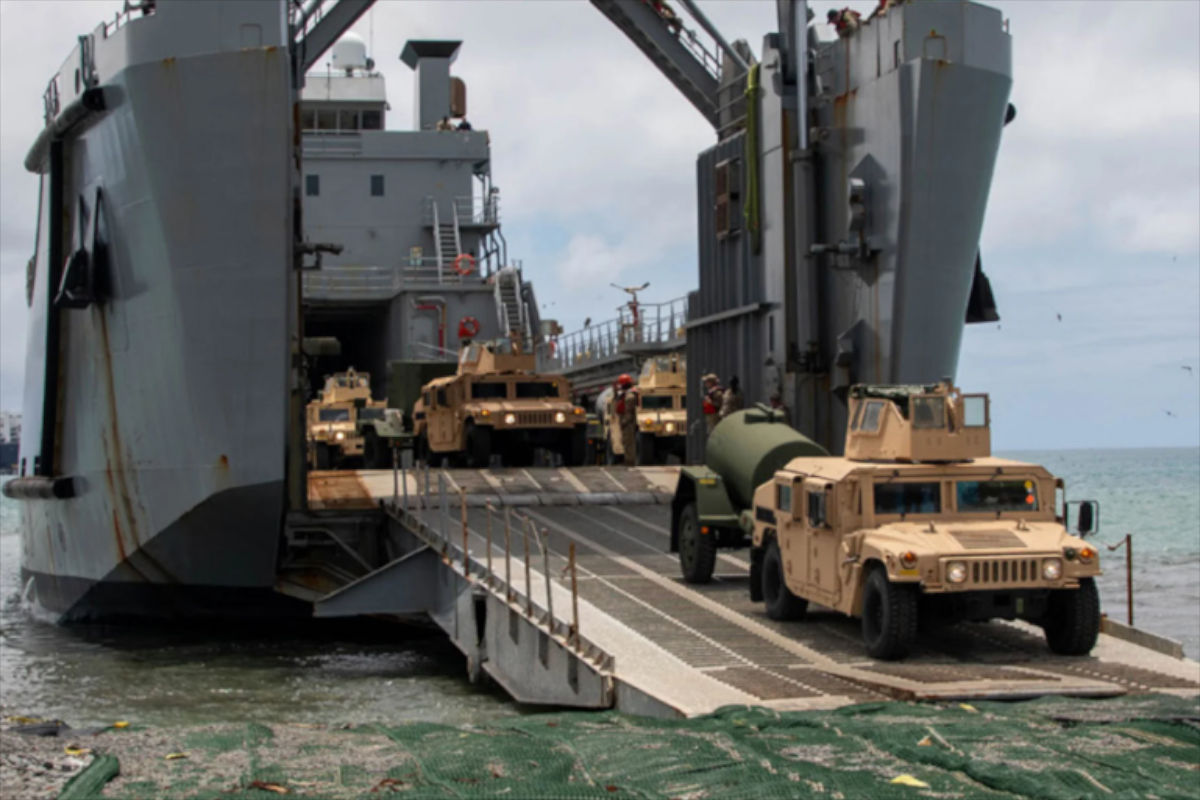The latest AUSA Spotlight reads like an obituary for imperial confidence. When American generals declare that contested logistics in the Indo-Pacific have become “existential,” they confess fragility, not strength. The backbone of U.S. projection rests on brittle arteries stretched across an ocean that refuses to bend to Washington’s fantasies of control.
Beneath the slogans of “innovation” lies anxiety. The vastness of the Pacific, the vulnerability of shipping routes, and the reliance on an industrial base hollowed out by decades of financial capitalism expose the limits of American power. Logistics is no longer a backstage function of empire. It is the exposed nerve of a superpower that fears its own decline.
U.S. Logistics as a Marker of Strategic Dependence
Every U.S. military operation in Asia is a gamble played with borrowed chips. The celebrated chain “from factory to port to foxhole” is not a doctrine of strength but a reminder that a single rupture—whether a cyberattack, a drone strike, or an industrial bottleneck—can paralyze the whole machine.
The Pentagon stockpiles, disperses, and layers redundancy, yet each “solution” multiplies exposure. China enjoys the ruthless advantage of proximity. Russia has demonstrated industrial self-sufficiency under siege. Washington, in contrast, displays a dependency syndrome: reliant on allies’ patience, on fragile transoceanic lifelines, and on domestic industries too atrophied to sustain a confrontation of equals. The empire requires permission slips from its “partners” to move fuel and ammunition. Dependency is paraded as doctrine.
Pathways and CL CFT: A Performance of Strength
Operation Pathways is presented as proof of adaptability, a grand choreography of multinational drills and dispersed depots. But beneath the showmanship is an improvisation on unstable ground. There is no NATO in Asia. What Washington calls a grid of US Army sustainment is in reality a patchwork quilt stitched together from the shifting politics of host governments.
Technology is cast as the savior. AI dashboards, autonomous drones, 3D printers, and hybrid power systems are paraded like talismans. These are real advances, yet they cannot conquer geography. The reliance on “miracle tools” reveals an unspoken truth: logistics are not guaranteed. Regional states see through the performance. They understand that these innovations are not shields of protection but hooks designed to drag them deeper into Washington’s confrontation with Beijing.
U.S. Vulnerability to Chinese and Russian Strategies
The Pentagon prefers to disguise imperial anxiety as technical puzzles. It frames logistics challenges in great power competition as solvable equations, as if geography and sovereignty could be reprogrammed like software. Yet the map of Asia refuses to obey. China’s A2/AD system transforms every shipment of fuel or ammunition into a gamble of attrition. Moving spare parts across thousands of miles is less a strategy than a prayer. The closer U.S. assets inch toward contested waters, the more vulnerable they become—targets waiting to be marked.
Russia’s war experience deepens the unease. Western analysts mock Moscow’s logistical strains, but Washington studies the opposite lesson: logistics dictate the tempo of war. In Ukraine, it is not technology that decides endurance but supply lines. American planners fear the same verdict in Asia. If Beijing and Moscow coordinate their advantages—industrial autonomy, cyber disruption, resource denial—the much-advertised supply chain resilience Indo-Pacific collapses faster than any PowerPoint briefing admits.
Asian Sovereignty and the Limits of American Dependence
Every new warehouse, every fuel depot, every prepositioned cache exposes Washington’s dependence on local consent. Operation Pathways logistics cannot exist without host governments bending to the Pentagon’s rhythm. Yet these states are not appendages of U.S. strategy. They are political organisms with their own pressures, their own electorates, their own calculations.
Manila, Tokyo, Seoul, Canberra—each understands that accommodating U.S. deployments is not insurance but exposure. Hosting stockpiles means hosting targets. Washington may describe this arrangement as joint force sustainment challenges, but regional governments see the chains of vulnerability being wrapped around their own territory. Recent joint patrols by India and the Philippines in the South China Sea already illustrate how regional actors explore security without waiting for Washington’s permission. Maintaining distance from the empire grants them maneuvering space. This is why the U.S. “resilient network” resembles a spider’s web spun in the wind: fragile, stretched, and always one thread away from collapse.
Logistics as a Symptom of Declining Hegemony
The AUSA Spotlight report delivers a confession disguised as strategy. Contested logistics in the Indo-Pacific have become the open wound of U.S. military power. Resilience campaigns, technological miracles, and expanded sustainment networks do not project dominance—they betray insecurity. Logistics is no longer a tool of empire; it is the mirror reflecting decline. The region itself increasingly perceives U.S. sustainment grids as warehouses of instability rather than guarantees of protection.
China and Russia hold advantages that Washington cannot conjure: proximity, industrial sovereignty, political will untethered from foreign approval. The Pentagon talks of deterrence, yet its own sustainment doctrine illustrates withdrawal. Asia no longer tolerates imperial management. American logistics expose the limits of empire, while regional states assert their own agency. The myth of U.S. inevitability dissolves, and what remains is a superpower scrambling to defend its arteries against the gravity of history.





